Reviews
John Fasano
USA, 1988
Credits
Review by David Carter
Posted on 11 October 2009
Source Synapse Films DVD
Categories 31 Days of Horror VI
The Senate Commerce, Science and Transportation Committee held a special hearing in late 1985 on indecency in popular music, a charge leveled by the Parents Music Resource Center (a group chaired by the wives of senators and Cabinet members). The PMRC accused contemporary music of espousing sexual indecency, suicide, violence and Satanism, and singled out artists such as Prince, WASP, and Ozzy Osbourne. Despite the hearings being denounced by such diverse witnesses as future horror director Dee Snider and folk rocker John Denver, the PMRC hearings coerced the recording industry to begin the use of “Parental Advisory†stickers to warn consumers of objectionable content.
The move was a victory for the PMRC and an unpopular if toothless new restraint on musicians—a move far less restricting than outright censorship, as many were quick to call it. Among the general public, the hearings had the unplanned effect of buttressing another on-going moral panic in the 1980s: a belief in widespread satanic cult activity. In the late ’80s, Satanism became a popular topic on daytime chat shows such as Donahue and Geraldo, both of whom were quick to point to rock music as a leading influence in the rise of Satanism in teens.
The claim that rock was the Devil’s music was not a new one, neither was the penchant for rock artists to exploit their taboo status for financial gain. Several of the musicians protesting being labeled as evil had spent a considerable amount of time cultivating that image. The lure of the forbidden pleasures of evil that drew teens to heavy metal music was not unlike the one that drew them to the theatres for horror films. The shared enticement between the two mediums was evident to filmmaker John Fasano, who in 1988 made the film Black Roses based on the premise that rock music truly was a tool of evil.
Mill Basin, a quiet town near the US-Canadian border, has been chosen as the site of four consecutive concerts by the studio-only band Black Roses. The local parents are immediately opposed to the shows, citing offensive lyrics at a town meeting and calling the group “disciples of the devil.†The Mayor vetoes them, allowing the concert on the grounds that Elvis and The Beatles had garnered the same reaction from the town some twenty years prior.
The Black Roses take the stage with their innocuous power ballad “We’re on Our Way to Paradise,†assuaging any fears the townspeople may have had. Once left alone with the teens, lead singer Damien dons a black leather fetish outfit and launches into the more aggressive number “Rock Invasion.†Mill Basin’s teens receive the song’s message of rebellion and anarchy loud and clear and begin to leave behind their small town morals and embrace a violent rock and roll lifestyle.
The now-murderous teens are encouraged by nightly Black Roses concerts, which begin taking the form of a black mass and feature darker songs like “Soldiers of the Night.†A concerned teacher is the only one to realize the danger the town is in and confronts the band. It is then that Damien and the Roses reveal their true forms: demons bent on enslaving the teens of Mill Basin on their path to world domination.
Black Roses’ central device is a literal realization of the fear that rock music has a wholly negative effect on the lives of those who listen to it. The film is based on the idea that rock musicians are, in fact, tools of Satan who have the sole purpose of corrupting youths to do their bidding, a sensational claim used as a warning against rock music since its earliest days. Similarly, Black Roses pulls many of its ideas straight from other criticisms of popular music, particularly the idea that it is simply a “lure†by which children are indoctrinated into eschewing morality. This belief that rock musicians have some sort of propagandistic agenda beyond selling records was a key part of the PMRC campaign and the sole cornerstone of similar anti-rock campaigns led by religious groups, particularly Cardinal O’Connor’s 1990 claim that heavy metal led to demonic possession.
What is at the heart of the horror in Black Roses is more than simple youthful rebellion; it is the oft-used “evil children†device. Just as in films like Devil Times Five and Who Can Kill a Child?, evil children are used as the primary transgressors, and they supply the majority of the film’s scares. Almost all of the victims in Black Roses are authority figures, illustrating the other primary facet of the evil children subgenre: the destruction or breakdown of society. In this regard the film has two distinct similarities to Children of the Corn in that the violence is directed primarily towards adults in power and those committing the crimes are not fully responsible for their actions due to a corrupting outsider’s influence.
One of the more interesting aspects of the film is the type of violence used against adults. It is a mixture of teenage wish fulfillment and subversion of adult oppression. The violence committed by the males is primarily revenge driven. One particularly macho teen murders his father after his sexuality is questioned for wearing an earring. Johnny, the film’s main teen protagonist, murders his father for not giving him the attention he wanted. By playing into these concepts of alienation, Black Roses mirrors the theme of several heavy metal songs, if not the genre as a whole. The teens of Mill Basin are depicted as alienated from their families and their community prior to the band’s arrival, giving insight into why the Roses’ plan was so effective.
The violence committed by the female teens can be seen as a reaction to their treatment as sexual objects by the adult males in the town. One girl induces a heart attack in her friend’s father by stripping for him and his daughter subsequently uses her sexuality to lure the high school guidance councilor out of a second story window to his death. Formerly meek Julie becomes a seductress, using the taboo of sex with an underage girl to surprise and murder her lecherous stepfather. When her wiles don’t work on her teacher, she takes out her frustration by decapitating his girlfriend. All three girls are rebelling against being treated as fetish objects by the men in town and taking control over their own sexuality. Here Black Roses is portraying rock music as a liberator by serving as the impetus for the girls’ decision to empower themselves.
Black Roses has remained one of the most popular entries into the hard rock horror subgenre due in large part to the music featured in the film. The music of the Black Roses was performed by King Kobra, an early hair metal group featuring Carmine Appice, also a member of the on-screen Black Roses, on drums. The Roses’ music is passable radio-friendly hard rock, with the standouts “Soldiers of the Night†and “Me Against the World.†The latter track is by Lizzy Borden, who along with Bang Tango and Hallow’s Eve rounds out the Metal Blade soundtrack, itself a solid effort from bands that never had breakthrough hits.
Director Jon Fasano is also the man responsible for another entry into the rock horror cannon: 1987’s Rock ‘n’ Roll Nightmare. Things are taken more seriously here, but the connection explains the presence of some laughable demon puppets and the less-than-imposing creature that Damien becomes after his transformation. But Black Roses does manage to have some well-realized moments of terror and is an enjoyable artifact for fans of rock culture, and it ultimately reaches the same conclusion that the concerned parents at the film’s opening had – that rock music is a dangerous influence. On top of depicting it as evil, Black Roses also shows that rock music is unstoppable. The film concludes with a variation on the “he’s not dead yet†trope from slasher films: a news broadcast showing a healthy, living Damien promoting a new Black Roses tour, the implication being that rock can never die.
More 31 Days of Horror VI
-

From Beyond
1986 -
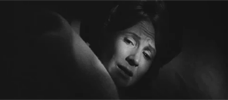
The Haunting
1963 -

Killer Klowns from Outer Space
1988 -

Shock ‘Em Dead
1991 -

Critters
1986 -
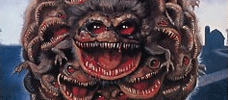
Critters 2
1988 -

The Fall of the House of Usher
1928 -

Jonestown: The Life and Death of Peoples Temple
2006 -

In the Mouth of Madness
1994 -

Winterbeast
1991 -

Black Roses
1988 -

Needful Things
1993 -
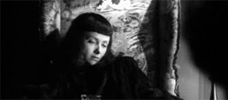
The Seventh Victim
1943 -
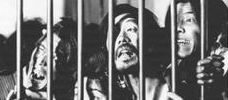
A Page of Madness
1926 -
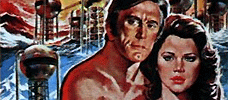
Holocaust 2000
1977 -
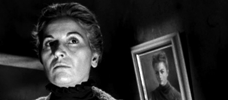
The Man and the Monster
1958 -

The Texas Chainsaw Massacre 2
1986 -
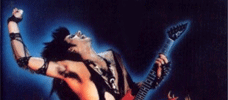
Trick or Treat
1986 -

Single White Female
1992 -
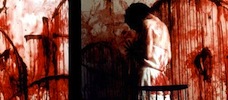
Trouble Every Day
2001 -
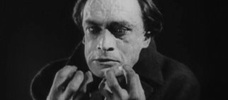
The Hands of Orlac
1924 -
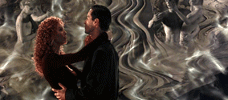
The Devil’s Advocate
1997 -
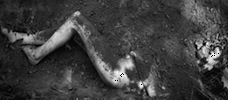
Nocturne
1998 -

Hardware
1990 -

Hard Rock Zombies
1985 -

The Slumber Party Massacre
1982 -

Saw VI
2009 -
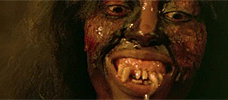
Zombi 4: After Death
1988 -

The Uninvited
1944 -
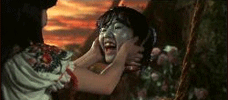
Hausu
1977
We don’t do comments anymore, but you may contact us here or find us on Twitter or Facebook.



